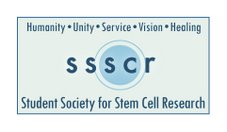Signaling Gateway - 1 February 2008
http://ealerts.nature.com/cgi-bin24/DM/y/eiw40Xztnp0H2W0M40Er
*********************************************************************
Signaling Update is a one-stop online resource designed to keep you
in touch with the latest and most exciting research in cell
signaling. New content is uploaded every Friday.
*********************************************************************
In Signaling Update this week:
------------------------
Featured Article
------------------------
SIGNALING CROSS-TALK: PYK-ING THE PATHWAY FOR STAT ACTIVATION
The calcium-dependent kinase Pyk2 coordinates both interferon-alpha
signaling and calcium signaling in the regulation of Jak1 and STAT1
activation.
Original research paper: Nature Immunology 9, 186-193 (2008)
http://ealerts.nature.com/cgi-bin24/DM/y/eiw40Xztnp0H2W0vP0E1
------------------------
Molecule Pages
------------------------
The Molecule Pages: A comprehensive, relational, signaling database.
Each week we highlight an expert-authored, peer-reviewed Molecule Page.
http://ealerts.nature.com/cgi-bin24/DM/y/eiw40Xztnp0H2W0HIE0EI
Mst1
http://ealerts.nature.com/cgi-bin24/DM/y/eiw40Xztnp0H2W0BmlD0EZ
Mst1 (also called Stk4) is a widely expressed serine/threonine kinase
that is activated by extreme cellular stressors. Mst1 induces
apoptosis by phosphorylating H2B at Ser 14, an event that is
associated with chromatin condensation. Mst1 is cleaved during
apoptosis by caspase 3. Cleavage at Asp 326 releases the N-terminal
kinase domain, which is much more active than the parent holoprotein.
Also published this week:
Mst2
http://ealerts.nature.com/cgi-bin24/DM/y/eiw40Xztnp0H2W0BmlE0Ea
Search the Molecule Pages
http://ealerts.nature.com/cgi-bin24/DM/y/eiw40Xztnp0H2W0BUuz0EE
-------------------
Selected Updates
-------------------
CELL POLARITY: HEADS OR TAILS?
The Wnt/beta-catenin signaling pathway maintains the anterioposterior
identity of flatworms during regeneration and homeostasis; inhibiting
this pathway following tail amputation results in the regeneration of
a head in the tail position.
Original research paper: Science 319, 323-327 (2008)
http://ealerts.nature.com/cgi-bin24/DM/y/eiw40Xztnp0H2W0BmlF0Eb
DRUG RESISTANCE: DESTABILIZING INFLUENCE
Low expression of TGFBI corresponds to resistance to the drug
paclitaxel in an ovarian cancer cell line, suggesting that TGFBI
could be used as a biomarker for predicting chemotherapy response.
Original research paper: Cancer Cell 12, 514–527 (2007)
http://ealerts.nature.com/cgi-bin24/DM/y/eiw40Xztnp0H2W0BmlG0Ec
SENSORY PERCEPTION: ONE TRPM8 FITS ALL
Neuronal expression studies on the TRPM8 ion channel reveal that the
ability of TRPM8 to convey different sensations of cold depends on
its expression in several discrete types of sensory neurons.
Original research paper: J. Neurosci. 27, 14147–14157 (2007)
http://ealerts.nature.com/cgi-bin24/DM/y/eiw40Xztnp0H2W0BmlH0Ed
More Updates:
http://ealerts.nature.com/cgi-bin24/DM/y/eiw40Xztnp0H2W0BmlI0Ee
------------------------
Research Library
------------------------
MACROPHAGE MIGRATION INHIBITORY FACTOR STIMULATES AMP-ACTIVATED
PROTEIN KINASE IN THE ISCHAEMIC HEART
Nature 451, 578-582 (2008)
http://ealerts.nature.com/cgi-bin24/DM/y/eiw40Xztnp0H2W0BmlJ0Ef
DEFICIENCY OR INHIBITION OF OXYGEN SENSOR Phd1 INDUCES HYPOXIA
TOLERANCE BY REPROGRAMMING BASAL METABOLISM
Nature Genetics 40, 170-180 (2008)
http://ealerts.nature.com/cgi-bin24/DM/y/eiw40Xztnp0H2W0BmlK0Eg
EPHRIN-B REVERSE SIGNALING PROMOTES STRUCTURAL AND FUNCTIONAL
SYNAPTIC MATURATION IN VIVO
Nature Neuroscience 11, 160-169 (2008)
http://ealerts.nature.com/cgi-bin24/DM/y/eiw40Xztnp0H2W0BmlL0Eh
------------------------
Signaling News
------------------------
NATURE NEWS: NAKED MOLE-RATS DON'T FEEL THE BURN
http://ealerts.nature.com/cgi-bin24/DM/y/eiw40Xztnp0H2W0BmTC0EA
Naked mole-rats are sensitive to mechanical pain caused by pinching,
but are insensitive to the burning sensation of capsaicin.
Researchers have now shown that this effect is due to the absence of
substance P in these animals. Exogenous expression of substance P
sensitizes naked mole-rats to capsaicin, suggesting that inhibition
of substance P could have an analgesic effect.
More News
http://ealerts.nature.com/cgi-bin24/DM/y/eiw40Xztnp0H2W0Crw0Ei
-------------------------
Gateway Updates
-------------------------
NEUROSCIENCE GATEWAY UPDATE
http://ealerts.nature.com/cgi-bin24/DM/y/eiw40Xztnp0H2W0BmlM0Ei
The Neuroscience Gateway is a comprehensive FREE online resource to
keep you abreast of the latest findings in the field.
This month's update features:
Pair of a kind
http://ealerts.nature.com/cgi-bin24/DM/y/eiw40Xztnp0H2W0Bl3z0EV
Backhanded complement
http://ealerts.nature.com/cgi-bin24/DM/y/eiw40Xztnp0H2W0Bk6t0ER
Sign up to receive the table of contents e-alert for the
Neuroscience Update.
http://ealerts.nature.com/cgi-bin24/DM/y/eiw40Xztnp0H2W0BmlN0Ej
-----------------------------
Signaling Job of the Week
-----------------------------
Biotherapeutics Positions
Employer: Pfizer
Location: Sandwich, United Kingdom
http://ealerts.nature.com/cgi-bin24/DM/y/eiw40Xztnp0H2W0BmlO0Ek
Pfizer Biotherapeutics Research is seeking experienced professionals
to create a center of biotherapeutics innovation at their facility
in Sandwich, UK. Positions are available for scientists with
expertise in therapeutic antibodies or proteins, drug discovery,
hybridomas, viral vectors, molecular biology, cell trafficking and
bioanalytics. To learn more about these positions, please visit
Pfizer Biotherapeutics
http://ealerts.nature.com/cgi-bin24/DM/y/eiw40Xztnp0H2W0BXYA0Eq
More Jobs:
http://ealerts.nature.com/cgi-bin24/DM/y/eiw40Xztnp0H2W0Ba6W0Em
To advertize a job in this spot, please contact Naturejobs.
http://ealerts.nature.com/cgi-bin24/DM/y/eiw40Xztnp0H2W0vqs0EU
======================================================================
Genentech is proud to be a corporate sponsor of the UCSD-Nature Signaling Gateway.
Genentech is a leading biotechnology company that discovers,
develops, manufactures and commercializes biotherapeutics
for significant unmet medical needs. Fifteen of the currently
approved biotechnology products stem from or are based on
Genentech science. Genentech manufactures and commercializes
ten biotechnology products directly in the United States.
The company has headquarters in South San Francisco, California,
and is traded on the New York Stock Exchange under the symbol DNA.
http://ealerts.nature.com/cgi-bin24/DM/y/eiw40Xztnp0H2W0dIO0Eu
=====================================================================
As a registered user of the Nature Publishing Group web sites, you
were selected to receive this message in the genuine belief that it
would be of interest to you.
If you no longer wish to receive news and announcements from Nature
Publishing Group or wish to unsubscribe from the Signaling Update
email alert please update your online Nature.com account details here:
http://ealerts.nature.com/cgi-bin24/DM/y/eiw40Xztnp0H2W0BCGZ0Ec
For further technical assistance or any other enquiries, please click here:
http://ealerts.nature.com/cgi-bin24/DM/y/eiw40Xztnp0H2W0BByD0E4
Nature's world-wide offices:
London . Paris . Munich . New Delhi . Tokyo . Melbourne . San Diego .
San Francisco . Washington . New York . Boston
(c) 2008 Nature Publishing Group
---------------------------------------------------------------------










